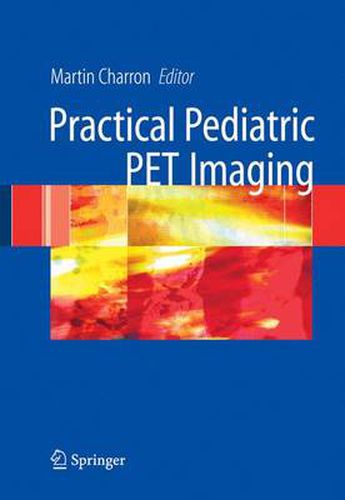Readings Newsletter
Become a Readings Member to make your shopping experience even easier.
Sign in or sign up for free!
You’re not far away from qualifying for FREE standard shipping within Australia
You’ve qualified for FREE standard shipping within Australia
The cart is loading…






This title is printed to order. This book may have been self-published. If so, we cannot guarantee the quality of the content. In the main most books will have gone through the editing process however some may not. We therefore suggest that you be aware of this before ordering this book. If in doubt check either the author or publisher’s details as we are unable to accept any returns unless they are faulty. Please contact us if you have any questions.
Positron emission tomography (PET) has been at the forefront of fu- tional and molecular imaging for a number of years. The future of di- nostic imaging depends upon the ability to change from imaging anatomy to examining the processes at work in the body. The fact that there are now monographs examining particular aspects of PET, such as this book on the examination of children, speaks to the newly won maturity of PET. The authors are to be congratulated for the timely appearance of this volume. In recent years, PET has transformed the contributions of nuclear medicine to the diagnosis, staging, and follow-up of patients with cancer. Children with cancer deserve the very best and most comp- sionate care that society can provide. Ultimately the greatest comp- sion we can offer as physicians is to provide the best possible care. Those charged with creating public policy in the context of diagnostic medicine must make common cause with physicians and other sci- tists to ensure that that best possible care is realized at the bedside. All of the evidence suggests that PET is central to such optimal cancer care. In addition to the distinguished cast of physicians and researchers who contributed to this book, I welcome the contributions from te- nologists who are a key part of the interaction between the diagnostic process and the sick or potentially sick child. Good care is contingent upon putting parents and child at ease, and the technologist has a lead role in this.
$9.00 standard shipping within Australia
FREE standard shipping within Australia for orders over $100.00
Express & International shipping calculated at checkout
This title is printed to order. This book may have been self-published. If so, we cannot guarantee the quality of the content. In the main most books will have gone through the editing process however some may not. We therefore suggest that you be aware of this before ordering this book. If in doubt check either the author or publisher’s details as we are unable to accept any returns unless they are faulty. Please contact us if you have any questions.
Positron emission tomography (PET) has been at the forefront of fu- tional and molecular imaging for a number of years. The future of di- nostic imaging depends upon the ability to change from imaging anatomy to examining the processes at work in the body. The fact that there are now monographs examining particular aspects of PET, such as this book on the examination of children, speaks to the newly won maturity of PET. The authors are to be congratulated for the timely appearance of this volume. In recent years, PET has transformed the contributions of nuclear medicine to the diagnosis, staging, and follow-up of patients with cancer. Children with cancer deserve the very best and most comp- sionate care that society can provide. Ultimately the greatest comp- sion we can offer as physicians is to provide the best possible care. Those charged with creating public policy in the context of diagnostic medicine must make common cause with physicians and other sci- tists to ensure that that best possible care is realized at the bedside. All of the evidence suggests that PET is central to such optimal cancer care. In addition to the distinguished cast of physicians and researchers who contributed to this book, I welcome the contributions from te- nologists who are a key part of the interaction between the diagnostic process and the sick or potentially sick child. Good care is contingent upon putting parents and child at ease, and the technologist has a lead role in this.